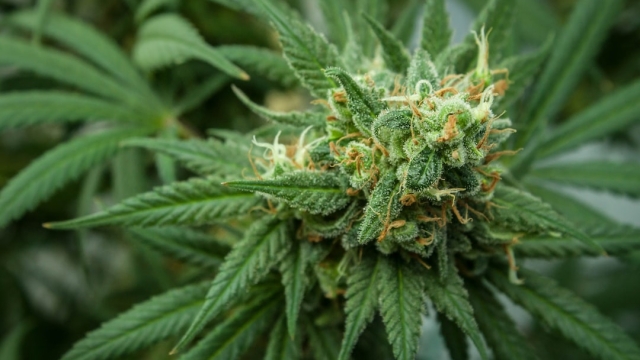
Mushroom cultivation, also known as mushroom growing, is a fascinating and rewarding venture that brings the joys of nature right to your doorstep. Whether you have a green thumb or are simply curious about exploring the world of fungi, mushroom growing offers a unique opportunity to engage with the natural world in a hands-on way.
With their earthy flavors, unique textures, and impressive nutritional profiles, mushrooms have carved a special place in both culinary and health-conscious communities. And what could be more satisfying than being able to grow these delectable fungi in the comfort of your own home? By delving into mushroom cultivation, you gain a deeper understanding of the intricate processes that transform humble soil into a bountiful harvest of savory, edible mushrooms.
In this beginner’s guide to mushroom growing, we will explore the essential aspects of this captivating practice, from understanding the different mushroom species to creating the ideal growing environment. Whether you aspire to embark on a full-scale mushroom farming operation or simply want to grow a few mushrooms for your personal culinary adventures, this guide will provide you with the knowledge and confidence needed to get started on your own mushroom growing journey. So, roll up your sleeves, grab a spade, and let’s dive into the fascinating world of mushroom cultivation!
Choosing the Right Mushroom Variety
When it comes to mushroom cultivation, one of the most important decisions you’ll need to make is choosing the right mushroom variety. The type of mushroom you choose will have a direct impact on the success of your cultivation project. Different varieties have different growing requirements and characteristics, so it’s important to choose one that aligns with your goals and resources.
Firstly, consider your purpose for growing mushrooms. Are you interested in cultivating mushrooms for culinary purposes, medicinal uses, or simply for decorative purposes? This will help guide you in selecting a variety that is best suited for your intended use. For example, if you’re aiming to grow mushrooms for culinary purposes, popular options like oyster mushrooms, shiitake mushrooms, or white button mushrooms could be excellent choices.
Next, take into account the growing conditions that you can provide. Different mushroom varieties thrive in different environments, so consider factors such as temperature, humidity, and lighting options. Some mushrooms may require specific temperature ranges or high humidity levels, while others may be more adaptable to varying conditions. It’s essential to choose a variety that you can provide the ideal conditions for.
Lastly, don’t forget to consider the availability of mushroom spawn or spores for the chosen variety. Spawn refers to the growing material used to inoculate the substrate for mushroom cultivation. Certain mushroom varieties may have limited availability of spawn or spores, especially if they are rare or exotic. Ensure that you have access to a reliable source of spawn or spores for successful cultivation.
In conclusion, choosing the right mushroom variety is a crucial step in mushroom cultivation. Consider your purpose, the growing conditions you can provide, and the availability of spawn or spores. By carefully selecting a variety that aligns with your goals and resources, you’ll increase your chances of a successful and rewarding mushroom cultivation experience.
Preparing the Growing Environment
When it comes to mushroom cultivation, creating the right growing environment is crucial for success. By providing the ideal conditions, you can ensure healthy mushroom growth and a bountiful harvest. Here are some key steps to prepare your growing environment:
Choose a Suitable Location:
First, find a suitable location for your mushroom growing venture. Look for a space that offers controlled temperature and humidity levels. An area with good ventilation is also important to prevent the build-up of excess moisture and carbon dioxide. Consider using a basement, shed, or greenhouse as your growing space.Create the Right Substrate:
Next, prepare the substrate that will serve as the growing medium for your mushrooms. Depending on the species you plan to cultivate, this could be a mix of materials such as straw, wood chips, sawdust, or compost. Make sure the substrate is properly sterilized to eliminate any competing organisms that could hinder mushroom growth.
Psilocybe Cubensis Grow BagProvide Adequate Moisture and Humidity:
Mushrooms thrive in moist environments, so it’s important to maintain proper moisture levels throughout the growing process. Regularly misting the growing area or using a humidifier can help to create the optimal humidity conditions. Be sure to monitor the moisture levels closely to prevent the substrate from drying out or becoming too wet.
By following these steps to prepare the growing environment, you’ll be well on your way to cultivating your own delicious mushrooms. Remember, each mushroom species may have specific requirements, so it’s essential to research and adapt your growing environment accordingly. Stay tuned for the next section as we delve into the fascinating world of mushroom cultivation techniques.
Cultivating and Harvesting Mushrooms
Mushroom growing involves several key steps, from the initial preparation to the exciting moment of harvesting your precious fungi. In this section, we will explore the process of cultivating and harvesting mushrooms, providing you with a beginner’s guide to get started.
1. Preparing the Growing Environment
Creating the ideal growing environment is crucial for successful mushroom cultivation. Start by selecting a suitable location, such as a basement, shed, or even a dedicated mushroom growing kit. Ensure the area is well-ventilated and clean. Mushrooms thrive in a dark and humid environment, so maintain a consistent temperature and humidity level.
2. Choosing the Right Mushroom Variety
Selecting the right mushroom variety is essential for a successful harvest. Different varieties have specific requirements and growth characteristics. Shiitake, oyster, and cremini mushrooms are popular choices for beginners due to their relatively easy cultivation process. Consider factors such as taste preference, availability of spores or spawn, and growing conditions when making your selection.
3. Inoculating and Harvesting
Once you have prepared your growing environment and chosen the mushroom variety, it’s time to inoculate and begin the cultivation process. Start by obtaining mushroom spores or spawn, which serve as the ‘seed’ for growing your mushrooms. Follow the instructions provided with the spores or spawn for proper inoculation.
Carefully monitor and maintain the environmental conditions as the mushrooms start to grow. Maintain the proper temperature and humidity levels, and provide regular misting to ensure the growing medium remains moist. As the mushrooms develop, it’s essential to inspect them regularly for signs of readiness. Harvest the mushrooms by firmly twisting or cutting them at the base, ensuring you don’t damage the surrounding mycelium.
By following these steps, you can embark on an exciting journey into mushroom growing. With patience, care, and the right conditions, you’ll soon be enjoying the fruits of your labor, savoring the earthy flavors of your very own homegrown mushrooms. Happy cultivating and harvesting!


